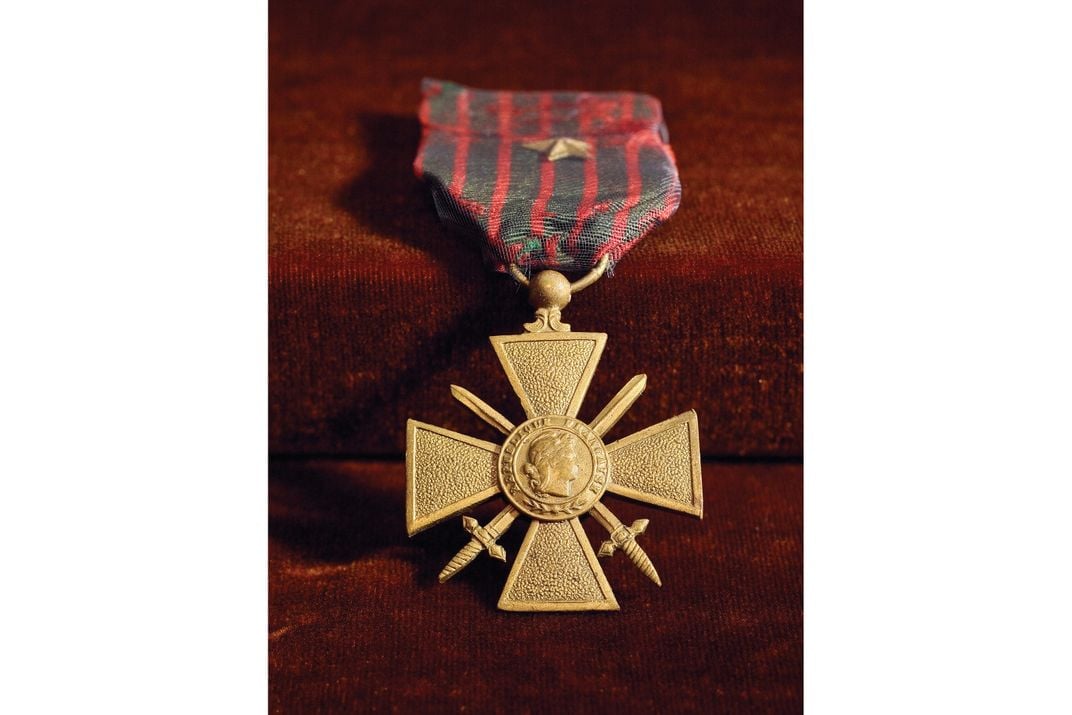The Unmatched Bravery of the Harlem Hellfighters
A salute to the all-Black World War I fighting unit
:focal(233x243:234x244)/https://tf-cmsv2-smithsonianmag-media.s3.amazonaws.com/filer/bb/04/bb04d876-12c4-46b2-954a-6453c3822781/may2021_a21_prologue.jpg)
On September 29, 1918, Cpl. Lawrence Leslie McVey was hunkered down in Séchault, a farming hamlet in northeast France, engulfed in the Meuse-Argonne offensive—one of the last and deadliest encounters in World War I.
Not far away, a crew of German soldiers unleashed bursts of machine-gun fire, aiming at the trench occupied by McVey and other soldiers in the U.S. Army’s 369th Infantry Regiment, an African American unit drawn mostly from New York City. Hot shrapnel from exploding shells fell like rain. Enemy biplanes roared overhead. The ground shuddered with the impact of incoming artillery.
McVey—a genial farm boy who’d found his way to Harlem from Flatonia, Texas, at age 18 and was known as Mac—had orders to lead an attack on the German machine-gun nest the following day and to neutralize it by any means, including hand-to-hand combat. The odds were high he wouldn’t make it back.
The squadron had been formed as the 15th Infantry Regiment of the New York National Guard in June 1916, after Harlem civic leaders lobbied New York Gov. Charles Whitman to let black men prove themselves as soldiers. The unit was commanded by Col. William Hayward, a white former officer in the Nebraska National Guard. During training in South Carolina, the soldiers weathered Jim Crow laws and racial slurs. When the United States entered the war, in 1917, Hayward deployed with the unit to France, and the 15th was soon recommissioned as the Army’s 369th Infantry Regiment. The men were forbidden to associate or train with white troops. Their initial duties included cooking and digging latrines.
In the spring of 1918, French and British armies, their front-line troops depleted, were desperate for American reinforcements. At Hayward’s urging, Gen. John J. Pershing sent the 369th, but Pershing also tainted his directive to the Allies with the racist observation that these soldiers were “inferior” to whites and lacked “civic and professional conscience.” He also wrote that French civilians should not fraternize with the African American troops, to avoid “spoiling” them.
Hayward, for his part, scorned the cynicism of Pershing’s decision. “Our great American general,” he wrote in a letter to a friend, ”simply put the black orphan in a basket, set it on the doorstep of the French, pulled the bell, and went away.”
After three weeks’ training, and outfitted with French rifles, the 369th was sent into battle in April 1918 and were among the first American troops to fight in the war. Pvt. Henry Johnson and Pvt. Neadham Roberts soon distinguished themselves: As night sentries at a camp near the Argonne Forest, they repelled a German raid, though lightly armed and badly outnumbered. Johnson single-handedly rescued Roberts from capture.
But the regiment’s most significant contribution came at Séchault, during the last major Allied offensive. Just before sunrise on September 30, McVey and his squad took out the enemy machine gunners, and the American Expeditionary Force parried the German thrust—prelude to a series of attacks that would effectively end the war.

McVey, who was seriously wounded, was awarded the Croix de Guerre, France’s highest military honor, as well as a Purple Heart. France eventually gave the entire unit the Croix de Guerre for bravery; the 369th is believed to be the first U.S. regiment to be so honored.
They were the longest-serving front-line American combat unit in the war, with 191 days in the French theater. Created in part to refute racial stereotypes, the 369th never surrendered a trench and fought so ferociously they earned the nickname “Hellfighters”; whether the Germans or the U.S. media coined the moniker is unknown.
Yet the Harlem Hellfighters, as they will forever be known, returned home only to face bigotry and prejudice, despite the victory parade down Fifth Avenue in New York that paid them tribute. McVey, aside from helping in his brother’s barbershop, worked for the Pennsylvania Railroad, which typically employed black men as porters or baggage handlers. He was beaten to death in a New York City park on September 13, 1968.
McVey’s time in uniform is captured in a black-and-white photo postcard of him, which he sent home while serving in France. The baby-faced corporal looks into the camera, standing ramrod-straight in his dress uniform, his peaked service hat cocked over one eye, a large bolo knife fastened to his belt. On the photo, someone, probably his wife, has written a single word in pencil: “Hero.”
Editor's Note, May 18, 2021: A previous version of this article stated that the Harlem Hellfighters were the first American unit to reach any front in World War I. In fact, the Hellfighters were merely among the first units to reach the war.